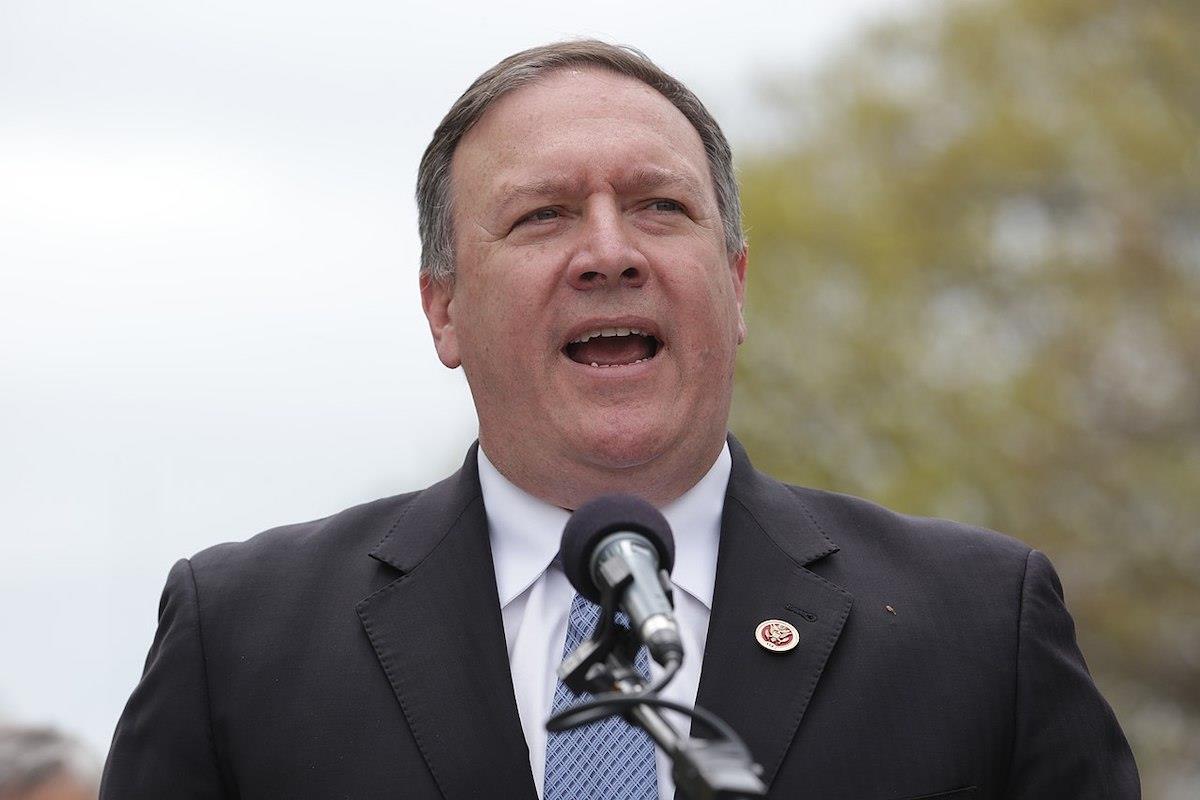(MENAFN- Asia Times)
While many international airlines start to recover after two years of Covid-induced groundings and stagnation, Iran's beleaguered fliers are still mostly grounded.
Even before the pandemic, Iran's airlines were bypassed by professional travelers and a flight of last resort for routes that reputable world carriers didn't serve.
In 2021, the airline safety and product rating review website AirlineRatings.com identified Iran Aseman Airlines as one of the world's six most unsafe airlines. The UK-based consultancy Skytrax had earlier named Iran Air and Mahan Air as two of the 20 worst airlines globally, measured by the quality of their services and number of accidents.
When the vaunted Joint Comprehensive Plan of Action nuclear deal was agreed to by Iran and six world powers in 2015, one of the many reasons Iranians flocked to the streets to celebrate was that the deal would have enabled the nation's languishing aviation industry to bounce back after decades of inertia.
The deal meant the United States would no longer impede Iran's ability to acquire new aircraft, spare parts and other associated services that faced sanctions.
The state of Iran's aviation sector has been so cataclysmic since the 1979 revolution that Iranian negotiators of the JCPOA insisted that an entire paragraph be included in the accord, explicitly obligating the United States to“allow for the sale of commercial passenger aircraft and related parts and services to Iran” by issuing the relevant licenses.
In the aftermath of the uprising that toppled the US-allied Shah and brought the Islamic Republic to power, international sanctions that have snowballed over time and impinged on every aspect of life in the country have rendered Iran's civil aviation sector an effective no-fly zone.
This means the government, unable to purchase new planes or procure spare parts, has had to settle on maintaining a fleet that was aging and becoming more uncompetitive in the region against emerging powers like Turkey and the United Arab Emirates.

Turkish Airlines' 300th plane arrived in 2019. Photo: WikiCommons
Neighbors flying high
According to 2020 data, Turkish Airlines, the flag carrier of Turkey, is the world's ninth-largest airline in terms of fleet size, and Emirates, the flag carrier of the UAE, is the world's fourth-largest airline for the number of destinations it serves.
Before the pandemic struck and wreaked havoc on tourism and traveling, Turkish Airlines reported annual revenue of US$13.2 billion in 2019. In the financial year 2019-20, its Dubai-based rival Emirates generated a whopping $25.1 billion in profits.
The fleet size of Iran Air, the flag carrier of the Islamic Republic, reportedly comprises 44 jetliners, nowhere near close to the standard of a mid-size international airline. Qatar Airways, the primary carrier of a country with 2.8 million people, operates a fleet of 234 aircraft and Saudia, formerly Saudi Arabian Airlines, has 144 aircraft.
There are no precise figures as to the number of planes the Islamic Republic has been able to import post-1979. The vagueness is partly due to the complexity of workarounds Iranian airlines have resorted to in order to obtain jets, including setting up shell corporations and paper companies in other countries, negotiating with leasers to buy their used aircraft and then dissolving those sanctions-busting entities.
The average age of the aircraft now in use by Iranian airlines is 25 years, which experts say is 17 years higher than the global standard. In comparison, the average fleet age of China Southern Airlines is 6.3 years and Etihad Airways, a thriving regional carrier with a hub in Abu Dhabi, has an average age of 6.9 years.
In recent decades, the preponderance of the planes Iranian companies have procured included different varieties of the Russian-manufactured narrow-body Tupelovs, churned out in the 1960s and 1970s.
But their poor quality and frequent fatal incidents often ascribed to their design convinced authorities in Tehran to introduce a ban on the Russian brand in 2010, and as a result, 23 Tupelovs were mothballed.

People search through the site of an Iranian Aseman Airlines crash in 2018. Photo: WikiCommons
Death toll rises after revolution
London-based aviation expert Alex Macheras believes nearly 2,000 Iranians have been killed in air accidents in the past four decades. The Aviation Safety Network, an initiative of the Virginia-based Flight Safety Foundation, has recorded 1,959 casualties in Iran-related accidents since the year 1929, of which only 204 deaths happened before the 1979 transition of the regime that galvanized US and international sanctions.
When the JCPOA came on stream in 2015, the administration of President Hassan Rouhani drew on the unprecedented opening and went on a shopping spree for state-of-the-art planes across Europe and the United States to overhaul the country's obsolete aviation flotilla.
In 2016, Rouhani signed a contract with the world's largest aerospace firm, Boeing, worth $16.6 billion for 80 new jets. These aircraft were supposed to be added to Iran Air's fleet.
Later on, in April 2017, Iran Aseman Airlines, desperately in need of new planes, signed an agreement to buy 30 Boeing 737 MAX planes with a proviso to purchase 30 more.
During his January 2016 state visit to France, President Rouhani oversaw the signing of a contract with Airbus valued at $25 billion for the delivery of 118 modern planes and a 1 billion euro deal with the turboprop manufacturer ATR for 40 other planes.
Then-US president Donald Trump's fateful withdrawal from the JCPOA in May 2018 shot down these deals, and the rejuvenation of Iran's national aviation industry was nipped in the bud.
From the day the agreements came into force until Trump's decision to nix the nuclear deal, only three Airbus jets and 20 units of ATR 72-600 short-haul regional planes were delivered to Iran.

A total of 20 ATR 72-600 short-haul planes were delivered to Iran. Photo: WikiCommons
Outdated airliners
The firms continue to cite US sanctions, unchanged under the Biden administration, as grounds for not honoring the contracts. Aviation experts believe the status quo of Iranian airlines is not tenable and the costs of maintaining and constantly repairing a roster of outdated jetliners that should have been retired long ago only increases over time.
“Iranian airline industry is incurring substantial costs by maintaining its aging fleet since the older aircraft burn more fuel and require more maintenance,” said Bijan Vasigh, an aviation expert and professor of economics and finance at the Embry-Riddle Aeronautical University.
“Iran Air has eight Airbus-A300 passenger aircraft with an average age of about 33 years. It is very difficult to operate financially such an old fleet of aircraft. Venezuela, with an average 32 years, is flying the oldest fleet of aircraft followed by Iran,” he told Asia Times.
A prevailing argument is that from a humanitarian perspective, it is imperative that there are exemptions to the broad-ranging sanctions so Iran can acquire new aircraft or related equipment to improve safety standards.
It was on this basis that the International Court of Justice ordered the United States in October 2018, following a lawsuit brought by the Islamic Republic, to rescind its punitive measures on humanitarian trade, food, medicine and civil aviation.
The United States refused to comply with the decree, and instead, upon the instruction of Trump's then-secretary of state Mike Pompeo, withdrew from the 1955 Treaty of Amity between Tehran and Washington, building on which the litigation was submitted to the world court in The Hague.
Siamak Seyfi, an assistant professor in tourism geographies at the University of Oulu, Finland, says the enactment of such exceptions should be seriously considered by the US government:“It would be expedient if there were exemptions from restrictions on Iran's acquisition of new commercial planes, or at the very least the supply of spare parts and technical services to existing planes.

Then-Secretary of State Mike Pompeo withdrew the US from the 1955 Treaty of Amity between Tehran and Washington. Photo: WikiCommons
No magic bullet
“Although Iran has learned how to circumvent sanctions and the country's civil aviation sector still operates, it is far from thriving, and this has had a significant influence on the country's travel and tourism sector.”
But an economist who has studied Iran's aviation sector extensively argues even humanitarian exemptions facilitating the supply of new planes won't serve as a magic bullet.
“Buying new airplanes alone will not solve Iranian airlines' dilemmas. To operate the purchased aircraft safely, one needs continuous access to supply chains of spare parts and producers' technical and maintenance support. One or two exemptions will not resolve the situation,” said Ali Dadpay, an associate professor of finance at the Gupta College of Business, University of Dallas.
“While the sanctions have contributed significantly to the number of incidents in Iran, there are other contributing factors such as mismanagement and poor supervision of safety standards. To provide safe air services, Iranian airlines need to be integrated into the global aviation community. Exemptions alone won't be sufficient,” he told Asia Times.
Dadpay believes even if the ongoing talks in Vienna to revive the JCPOA yield positive results and restore the nuclear deal, it is not clear if the new administration of President Ebrahim Raisi will treat the rehabilitation of the aviation industry as a top agenda item.
“Iran needs investments in its deteriorating infrastructure and water resources. Commercial aviation might not be on the top of the policymakers' priority list … There are different layers of decision-making in Iranian civil aviation involving the government, IRGC, and the national security apparatus. Some of these stakeholders will not look kindly at international conglomerates' presence in Iran.”
Sanctions still bite
Some legal experts say beyond the vagaries of the Iranian leadership's policy-making, barriers to the country's reconnection to international financial and banking services will continue to exist even with the restoration of a nuclear deal, and thus will hinder the renovation of Iran's aviation fleet.
“Certain Iranian end users will remain sanctioned and sales will be prohibited to those end users. This is because they are sanctioned for terror-related or other reasons,” said Nigel Kushner, chief executive of the London-headquartered W Legal law firm.
He referenced Mahan Air, Iran's largest private airline, which is specifically sanctioned by the US government for its ties to the Islamic Revolutionary Guard Corps.
“Commercially, I anticipate that most banks will continue to refuse to process Iranian-related transactions notwithstanding it may be legitimate to do so. This is because of FATF, money laundering concerns within the banking sector; the fear of sanctions being reimplemented; and the general desire not to conduct business in jurisdictions deemed to be high risk. There will be no smooth transition to trade,” he added.
MENAFN20012022000159011032ID1103567214